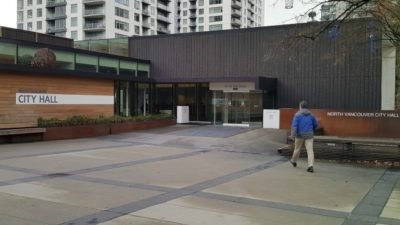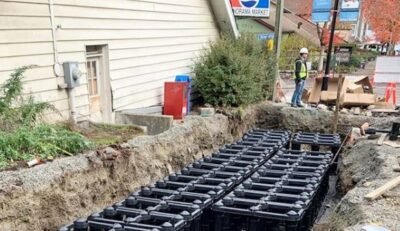By Barry Rurger
“My favourite thing about living in Lynn Valley are the excellent storm sewers!”
I’ve never said that, and neither have you. The reasons for living here are always the mountains and trees, or maybe the library and the music outside in the plaza. For some of us it’s the Panto at St Martin’s Hall, biking the trails on Mount Fromme, or just enjoying the dogs playing in Princess Park.
If the roads and sewers and water pipes are the bones and sinew of North Vancouver, all of these other things are the heart and soul of our community. They are the things that get people out of their houses and cars and bring them together to enjoy the place where we live. They’re also the things that are too easily sidelined as “frills” or “luxuries.”
During budget discussions earlier this year Council expressed concern that only 23 people had bothered to call or email their thoughts on a $160 million dollar municipal budget. Probably that was because few people have the time or energy to try and understand something so large and complex, or because so much of it is technical or involves things that just aren’t going to change. Where District residents can have a say though is on the spending that is most likely to directly effect their quality of life – Community Amenity Contributions, or CACs.
Developers pay the District in in two ways. They pay Development Cost Charges (DCC) which pay for “infrastructure services (roads, water, sewer and drainage), and the cost of acquiring or developing parkland to support the new development.” These nuts and bolts types of items are needed to support new projects and it’s expected that developers will cover most of these costs.
Community Amenity Contributions are also collected from property developers, because major developments like Lynn Valley Town Center also need things beyond underground utilities and roads. New communities need recreation facilities, services like seniors centres and child care, as well as parks and playgrounds, and art and cultural facilities. These are the kinds of things that are funded by Community Amenity Contributions. CACs are also a primary tool for encouraging the construction of rental and affordable housing, a type of development that has been identified as critical for the North Shore. In simple terms CACs fund the quality of life in our community, and make the District a safe, accessible, and welcoming place for all of the people who live and work here.
The process for calculating CACs is a complicated one, with the District and the Developer negotiating an amount that might use a fixed rate for Town and Village Centre sites, or which might use a convoluted formula that is “based on 75% of the estimated increase in market value of the land … less all development costs and profit.”
In either case, because a developer’s project makes the land more valuable, they’re expected to pay Community Amenity Contributions. For instance, if approved, the new Emery Place development is expected to generate CAC contributions of $11.9 million.
Community Amenity Contributions can be made in the form of public art or non-market units built as part of the project, or as cash paid directly to the District. Since the beginning of the CACpolicy in 2010 close to $63 million has been contributed by developers in the form either direct spending on amenities or cash contributions to the Capital Funding Program.
Council decides where and when that money can be spent, as directed by the District’s Community Amenity Contribution Policy. It’s this policy that will be reviewed at a Council workshop this month. The CAC policy describes some general goals for this spending, including non-market housing; community, cultural, or recreation facilities; seniors care and child care facilities; pedestrian, cycling, and streetscape improvements; and of course libraries and Public Art.
The challenge for District taxpayers – and I expect developers as well – is finding out how CAC funds are used after they disappear into the District’s budget. The average resident has no way of knowing how the money is being spent, or even how the spending decisions are made. Since CAC funded amenities are things that we all enjoy on a daily basis, it’s important that we know that they continue to be supported.
In April, council member Doug Mackay-Dunn declared that “Art is in the eye of the beholder, but good sidewalks are not.” He took specific aim at the Community Amenity Contribution program’s funding for public art, but also opened the door to Council considering the use of CAC funds for nuts and bolts infrastructure instead of the life-enhancing amenities that we all enjoy.
If you believe that your community needs more than just sewer connections and trash pickup, you need to watch for the CAC discussions at Council and make sure that your elected officials know that you value quality of life as much as safe drinking water.









Comments
NOTE: The North Shore Daily Post welcomes your opinions and comments. We do not allow personal attacks, offensive language or unsubstantiated allegations. We reserve the right to edit comments for length, style, legality and taste and reproduce them in print, electronic or otherwise. For further information, please contact the editor or publisher, or see our Terms and Conditions.